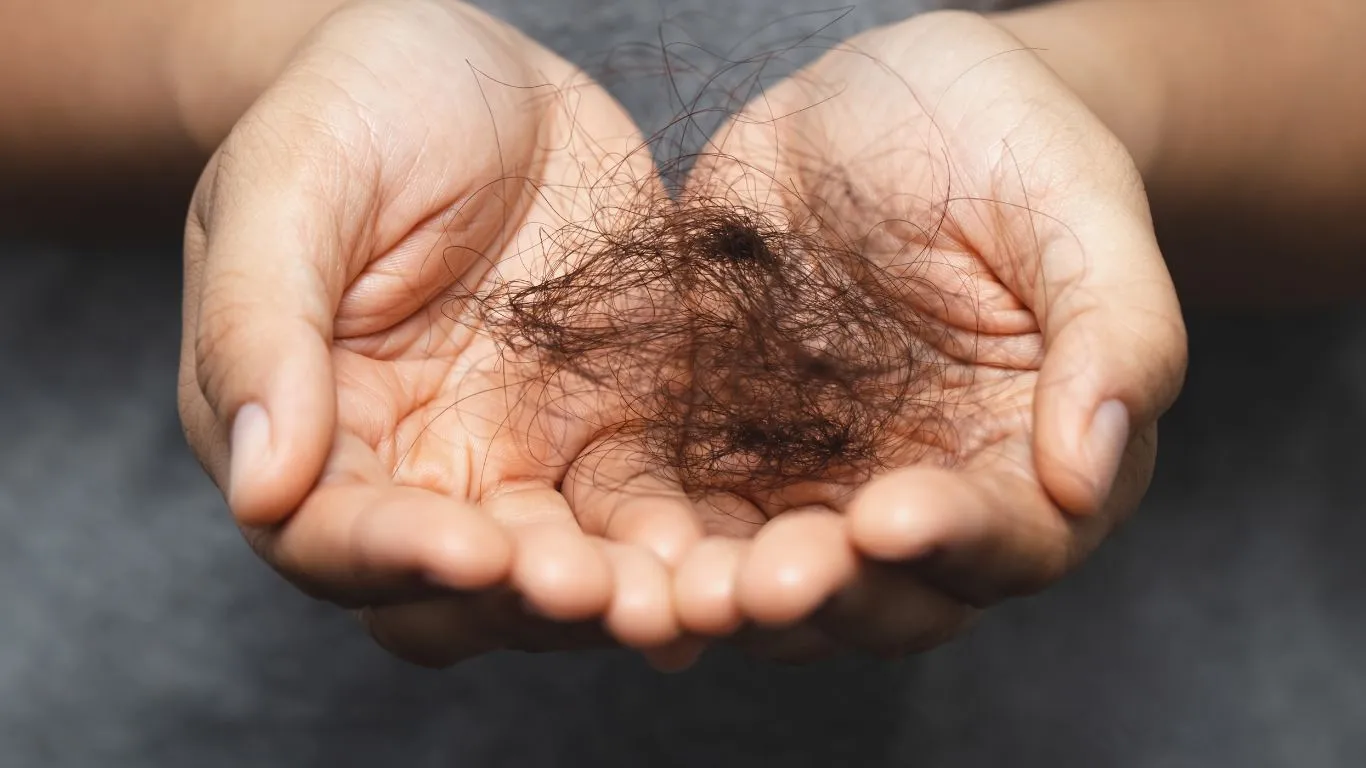Hair loss is a common problem that affects many people, both men and women. This issue can arise from several factors, including genetics, nutrition, stress, and environmental factors.
Types of Hair Loss
There are several types including:
Genetic (Androgenetic Alopecia)
Also known as “male pattern baldness,” this is the most common type. It occurs due to genetic factors that cause hair follicles to shrink and gradually lose hair.
In men, genetic hair loss typically begins with a receding hairline and thinning at the crown of the head. Men with this type often face the possibility of baldness eventually.
For women, this condition is referred to as female pattern baldness, characterized by general thinning of hair across the scalp, with more noticeable loss at the crown.
تساقط الشعر الكربي
This type of occurs as a result of physical or emotional stress, sudden weight loss, or illness. It is usually temporary, and hair may regrow after the underlying cause is treated.
This type does not typically lead to complete baldness.
الثعلبة البقعية
This is a type of associated with autoimmune diseases, leading to complete loss of hair in patches. About 90% of those affected can regrow hair within a few years.
سعفة الرأس
This is a common cause of hair loss among children, caused by a fungal infection affecting the scalp. It results in circular patches of hair los s, which may expand over time.
ثعلبة الشد
This type is often linked to hairstyling practices that involve pulling hair tightly, such as ponytails, braids, or other styles that place constant stress on hair follicles.
Read More: الاكزيما الدهنية
Scarring Alopecia
Certain types of scarring alopecia can lead to permanent damage to hair follicles, replacing them with scar tissue. This change prevents hair growth in the affected areas.
This may occur due to inflammatory skin conditions that affect the scalp and cause scarring, such as cellulitis, folliculitis, and certain types of lupus or lichen planus.
Causes
Individuals typically lose about 50 to 100 hairs daily as part of the natural hair cycle, often unnoticed because new hair grows simultaneously. Hair loss occurs when new hair does not replace fallen hair.
However, this condition can be linked to several factors, including:
Family History
This is the most common cause of genetic hair loss, which occurs with aging. It often appears gradually and in predictable patterns, such as a receding hairline in men or thinning at the crown in women.
Hormonal Changes
Several conditions can lead to permanent or temporary hair loss, including hormonal changes due to pregnancy, childbirth, menopause, or thyroid issues.
Side Effects of Medications
Hair loss can occur as a side effect of certain medications used to treat cancer, arthritis, depression, heart problems, gout, and high blood pressure.
Severe Stress
Severe stress can lead to this condition, and many individuals notice this occurring several months after experiencing physical or emotional trauma. This type is usually temporary.
Hairstyles
Hairstyles that involve pulling the hair can lead to a type of hair loss known as traction alopecia. For instance, excessive braiding can contribute to this condition.
Additionally, hair treatments such as hot oil or chemical treatments may contribute to this problem.
Treatment
If hair loss is due to medication, hormonal imbalances, thyroid problems, or dietary issues, the doctor will address the underlying cause. Correcting the root problem is often sufficient to stop loss in these cases.
Most treatments target androgenetic alopecia and include:
العلاجات الدوائية
Over-the-counter medications, such as minoxidil, are often the first line of treatment for genetic hair loss.
Prescription medications like finasteride may also be used, but only for men with typical baldness.
Hair Transplant
During this procedure, the doctor carefully removes hair follicles from areas of the scalp with high density and transplants them to areas with less density.
Platelet-Rich Plasma (PRP)
After drawing a blood sample from the patient, the doctor separates the plasma and injects it into the scalp, which may help slow hair loss and promote new hair growth.
Stem cell hair transplant
These are among the latest techniques considered highly effective in the early stages of baldness and hair loss. This method involves extracting hair follicles with stem cell-like properties that can divide.
These cells are then planted in other areas to perform their original functions. After extracting the microcells from the follicles, they divide into large numbers and are planted in balding areas, enhancing hair growth and increasing density.
References:
- Symptoms and causes. (n.d.). Mayo Clinic. https://www.mayoclinic.org/diseases-conditions/hair-loss/symptoms-causes/syc-20372926
- (2024, May 1). Cleveland Clinic. https://my.clevelandclinic.org/health/diseases/21753-hair-loss#management-and-treatment

